Correction: Eroğlu, G. Electroencephalography-Based Neuroinflammation Diagnosis and Its Role in Learning Disabilities. Diagnostics 2025, 15, 764
- Supplementary Materials: The following supporting information can be downloaded at: https://www.mdpi.com/article/10.3390/diagnostics15060764/s1, Supplementary File S1: Python codes MDPI.ipynb.
Reference
- Eroğlu, G. Electroencephalography-Based Neuroinflammation Diagnosis and Its Role in Learning Disabilities. Diagnostics 2025, 15, 764. [Google Scholar] [CrossRef] [PubMed]
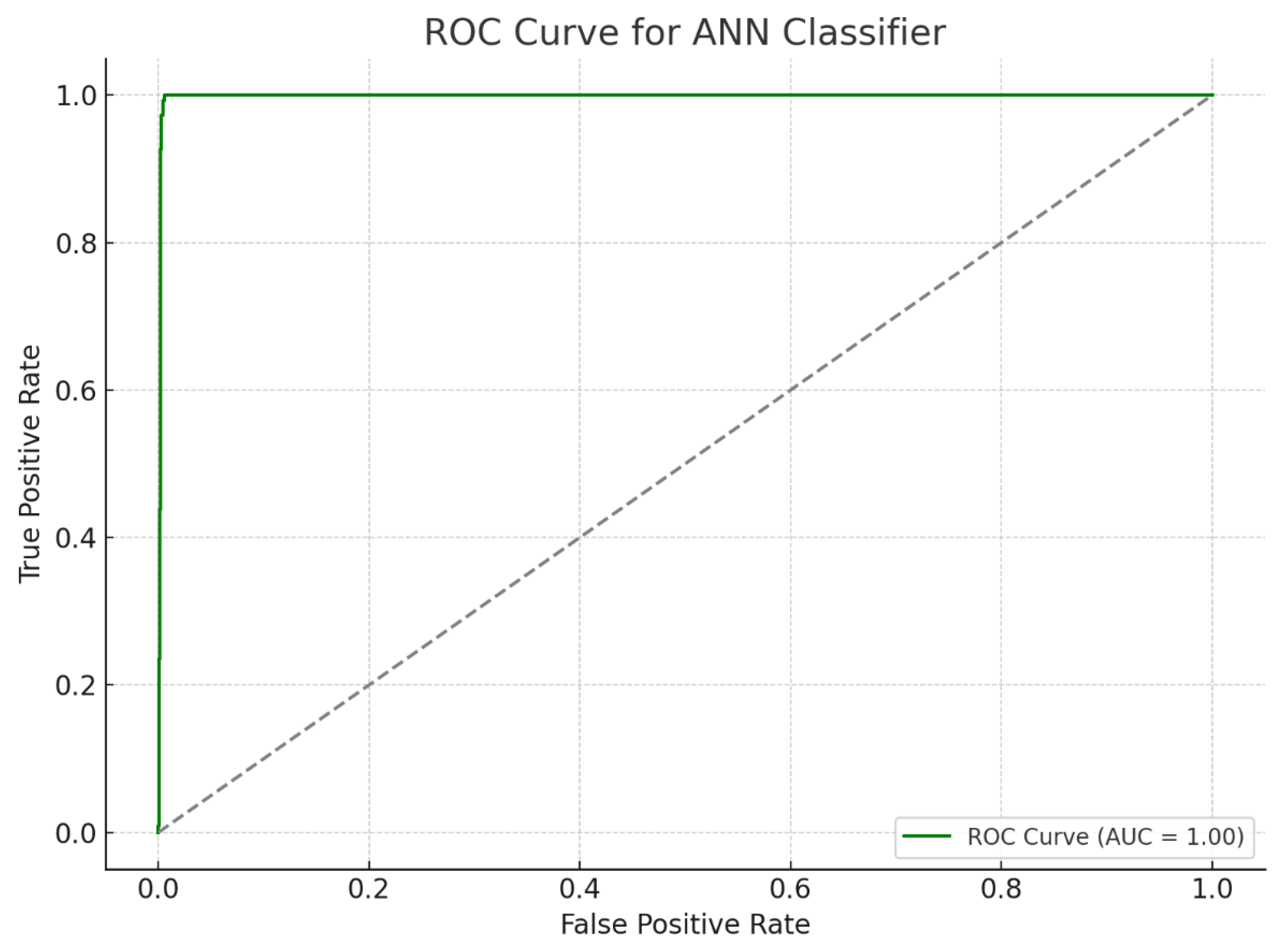
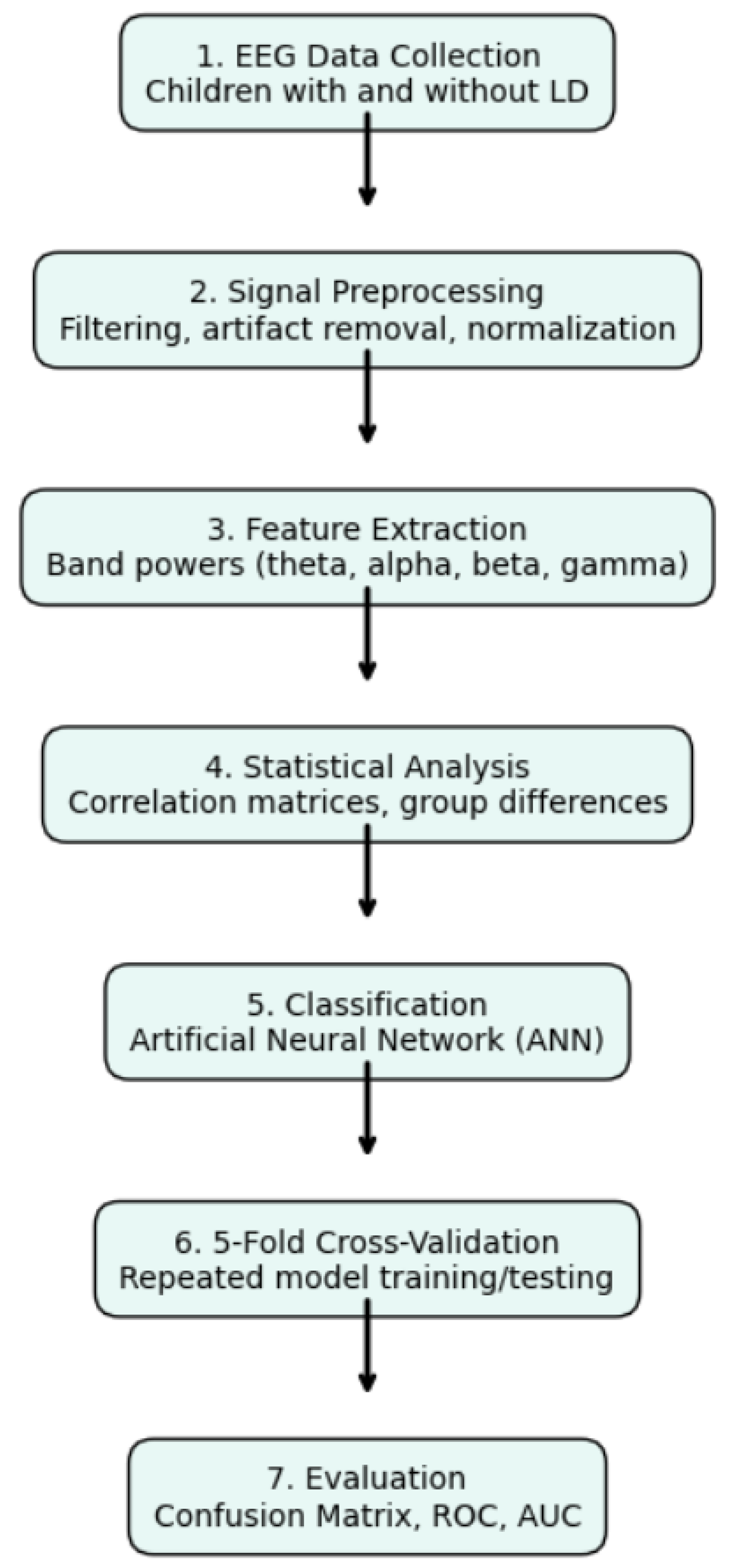
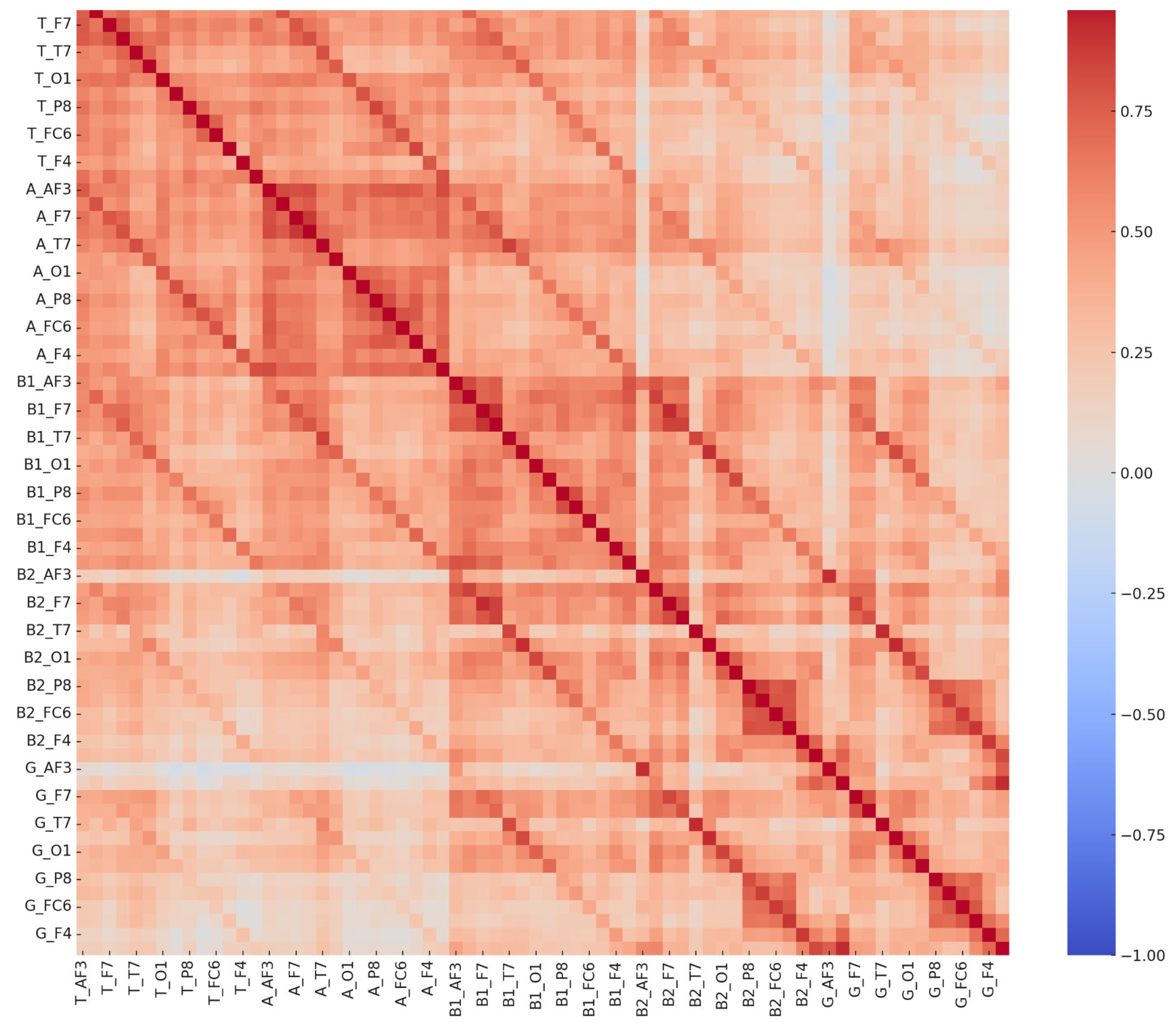
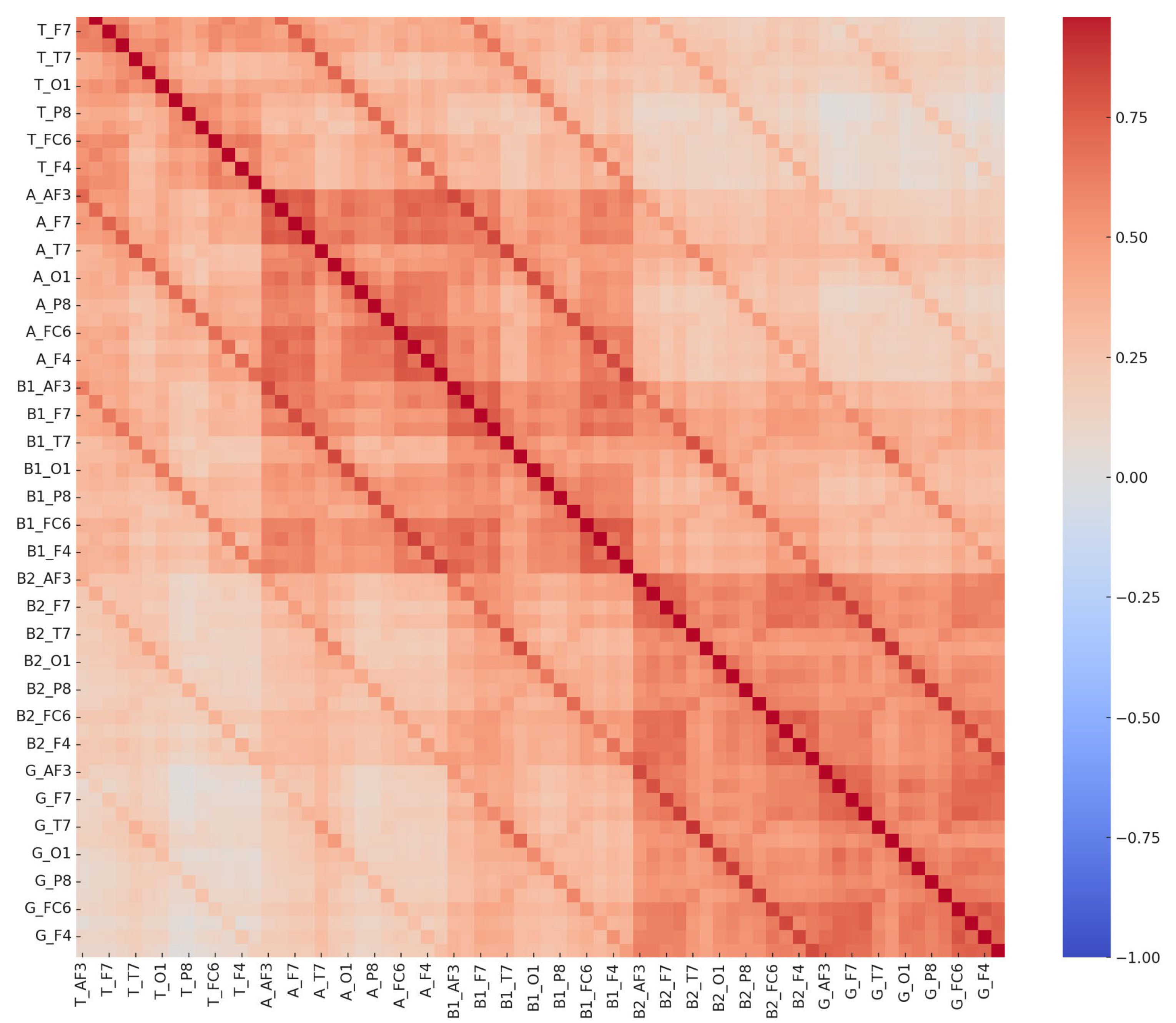
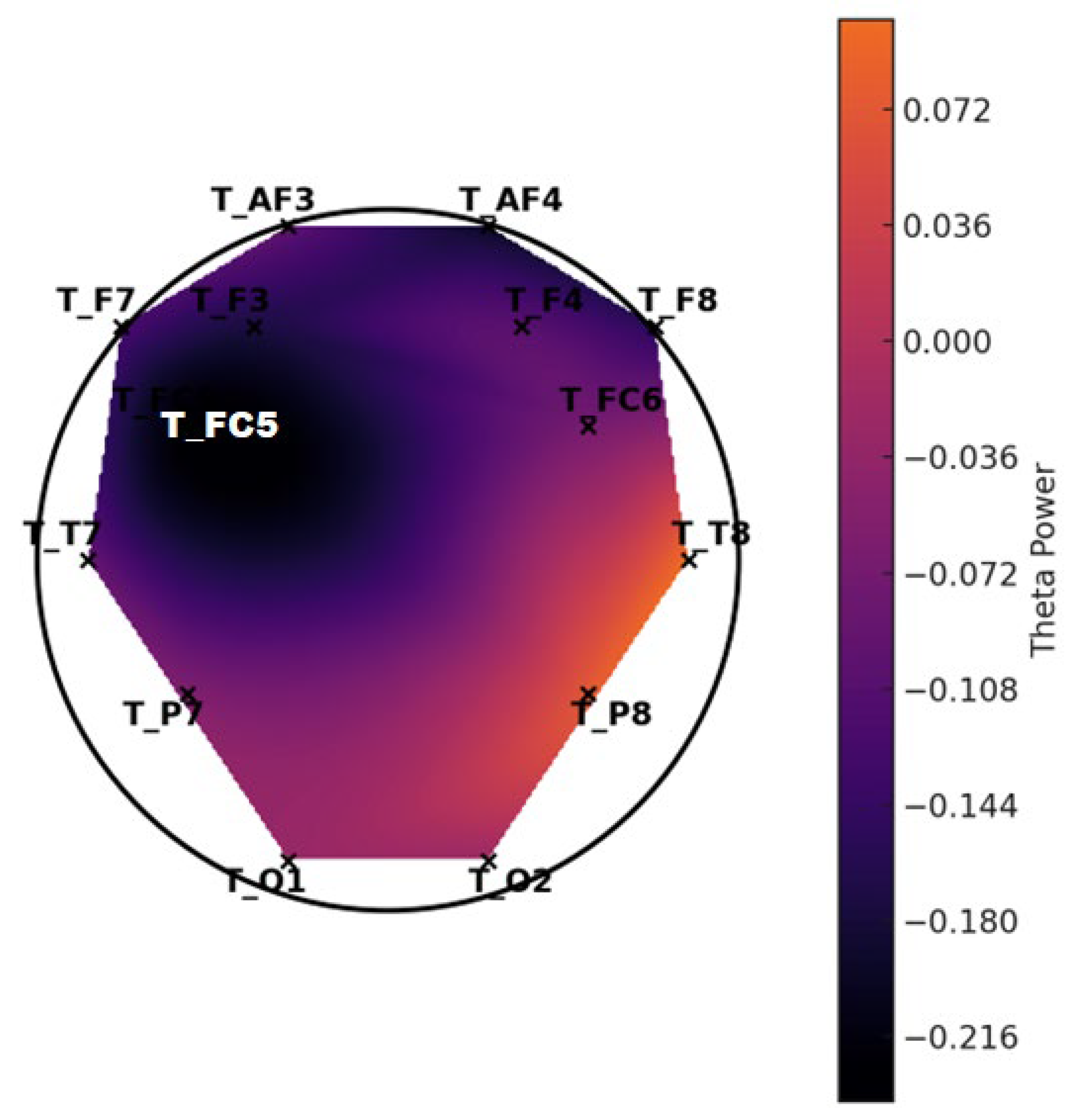
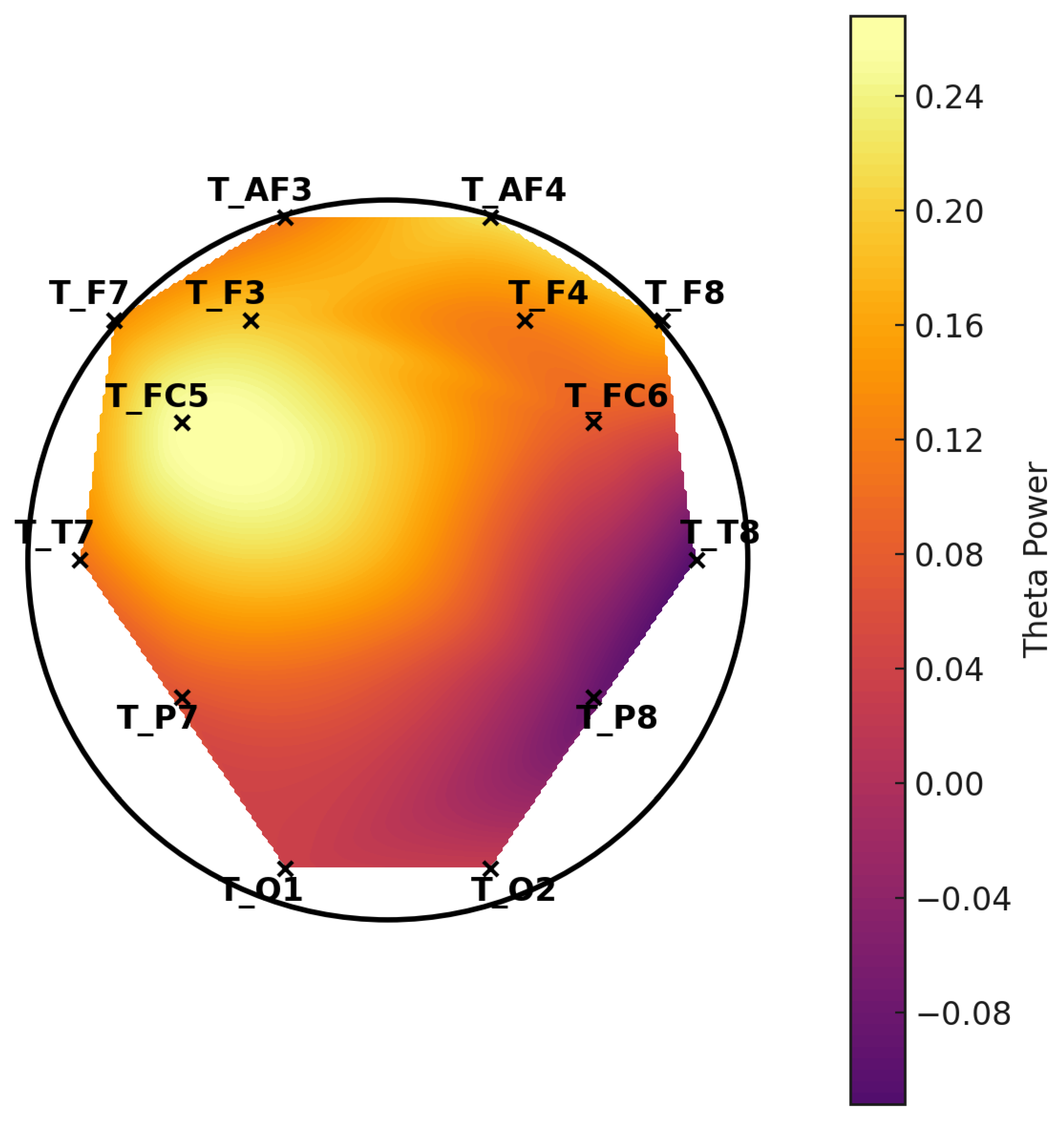
| Input Layer | 70 EEG Features |
|---|---|
| Hidden Layer 1 | 64 neurons, Activation: ReLU |
| Hidden Layer 2 | 32 neurons, Activation: ReLU |
| Output Layer | 1 neuron, Activation: Sigmoid |
| Total Layers | 4 |
| Metric | Mean Value | Standard Deviation |
|---|---|---|
| Accuracy | 99.49% | ±0.0009 |
| Precision | 99.05% | ±0.0017 |
| Recall | 100% | ±0.0000 |
| F1 Score | 99.5% | ±0.0008 |
| Log Loss | 0.031 | ±0.01 |
Disclaimer/Publisher’s Note: The statements, opinions and data contained in all publications are solely those of the individual author(s) and contributor(s) and not of MDPI and/or the editor(s). MDPI and/or the editor(s) disclaim responsibility for any injury to people or property resulting from any ideas, methods, instructions or products referred to in the content. |
© 2025 by the author. Licensee MDPI, Basel, Switzerland. This article is an open access article distributed under the terms and conditions of the Creative Commons Attribution (CC BY) license (https://creativecommons.org/licenses/by/4.0/).
Share and Cite
Eroğlu, G. Correction: Eroğlu, G. Electroencephalography-Based Neuroinflammation Diagnosis and Its Role in Learning Disabilities. Diagnostics 2025, 15, 764. Diagnostics 2025, 15, 1772. https://doi.org/10.3390/diagnostics15141772
Eroğlu G. Correction: Eroğlu, G. Electroencephalography-Based Neuroinflammation Diagnosis and Its Role in Learning Disabilities. Diagnostics 2025, 15, 764. Diagnostics. 2025; 15(14):1772. https://doi.org/10.3390/diagnostics15141772
Chicago/Turabian StyleEroğlu, Günet. 2025. "Correction: Eroğlu, G. Electroencephalography-Based Neuroinflammation Diagnosis and Its Role in Learning Disabilities. Diagnostics 2025, 15, 764" Diagnostics 15, no. 14: 1772. https://doi.org/10.3390/diagnostics15141772
APA StyleEroğlu, G. (2025). Correction: Eroğlu, G. Electroencephalography-Based Neuroinflammation Diagnosis and Its Role in Learning Disabilities. Diagnostics 2025, 15, 764. Diagnostics, 15(14), 1772. https://doi.org/10.3390/diagnostics15141772





